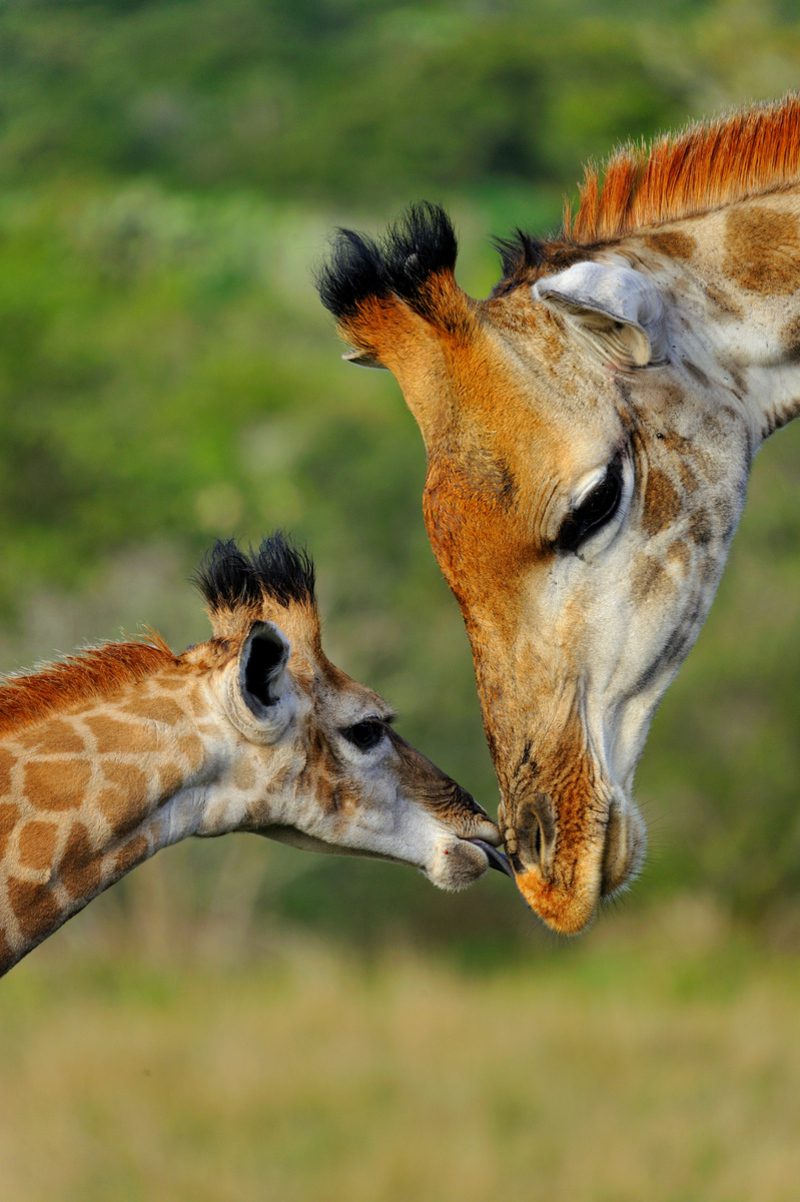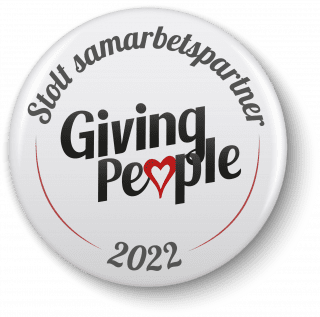Departing from Brazzaville in the Republic of Congo, the city of Rumba, we embark on an extraordinary 12-night safari cruise on the Congo and Sangha rivers. Over nearly 1,000 km, we will navigate from the green hills to the swamp forests of Sangha to reach the cathedral forests populated by thousands of gorillas, chimpanzees, forest elephants, bongos, buffaloes and more than 350 species of birds. The Congo basin forest is one of the most mysterious and least known forests in the world, with outstanding flora and fauna.
With our launch boat, we go up tributaries that have been forgotten, every day, in search of nature’s wonders preserved out of sight. The people of the forest will be our guides. We will share their way of life and their unique knowledge passed down for centuries.
In the evening, in the quiet of our comfortable ship in the heart of the second largest lung on the planet, while sipping a glass of wine, we will address the big questions of conservation, the history of Congo, the history of its people…
Contact form

Ecorating: 3.5
This product meets our requirements for Ecorating, a product that is good for humans and the environment.
Does my trip make a difference?
Read more
This product meets our requirements for Ecorating, a product that is good for humans and the environment.
Sample Itinerary
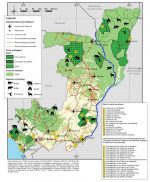
The Congo Basin – An exceptional fauna and flora and the second tropical forest massif after the Amazon. Many areas have never been explored by humans. Thus, the primary forest is particularly intact and the fauna is very numerous. Here you will find a large number of lowland gorillas (200,000 individuals in Congo), forest elephants (8,000 individuals), chimpanzees, bonobos, hippos, bongos, bush pigs, buffaloes, blue duikers, sitatungas, panthers, etc.
Most of these species can be observed in Bai, clearings of several hectares rich in mineral salts, flowers and nutritious leaves. Here live Nile crocodiles, Goliath tiger fish and pangolins. More than 350 species of birds, including the Black-chinned Weaver, Finsch’s Francolin and the Congo Wheatear. Also large enigmatic species such as Black-bellied Bustard and Senegal lapwing, others observed more rarely are the black-headed bee-eater and Sladen’s Barbican, favorite forest species such as the gray parrot and various species of hornbills and turacos, kingfishers, barbicans, Congo barbets, sunbirds and weavers. Thousands of insects and over 10,000 species of plants. A new world to discover!
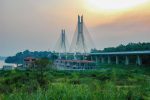
When you disembark at Brazzaville’s Maya-Maya International Airport, you will first undergo a health check to verify the validity of your vaccination certificate. You go through immigration, where you must present your passport and visa. Finally, you pick up your luggage. A member of the team will be on hand to welcome you. You then board the boat that will be your home for the next 12 nights. Exciting!
Briefing at breakfast. Visit of the city (Poto Poto art school, Museum of Congo, cathedral). Navigation begins on the Congo River to Ngabe, one of the former capitals of the Téké kingdom. We take advantage of the first miles to get to know our guides and discover the history of Congo.
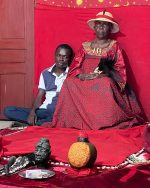
In the morning we reach the village of Ngabe, one of the old capitals of the Téké kingdom. We go up into the village and visit the current Queen Ngalifourou. In her capacity as guardian of “Nkwembali”, the spiritual god of Batéké, she is the person authorized to transfer power to the new king, Makoko. She is a very influential person in the Téké kingdom, one of the country’s powerful kingdoms. We participate in a traditional Téké dance. At the end of the day, we reach the mouth of the Lefini, which borders the Téké kingdom. The hippos are sunbathing. We observe.
Later seminar on the Téké kingdom.
Photo credit: @ expeditions Ducret

The Congo River widens considerably (more than 10 km) and a group of islands is formed.
Fishing villages settle there during the dry season. We reach the fishing village of Mossaka, known throughout the country for its smoked fish. We discover remains from colonial times. We are looking for Mr. Trechot’s house. Seminar on the Savorgnan de Brazza expedition and the Stanley expedition. We float up the Sangha River zigzagging through the green and impenetrable swamp forest. We go into very sparsely populated and wild areas. We meet some fishermen, the Sangha-Sangha people. Seminar on the Congo Basin ecosystem. Photo credit: @ expeditions Ducret
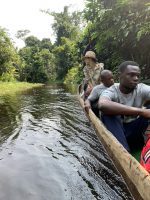
We take tributaries, either by canoe or by motorboat. In the rainforest we discover plants of pharmacology: 1000 species of plants. Fishing for those who want to join! Photo credit: @ expeditions Ducret
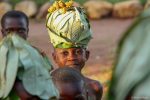
Today we cross the equator. We pass the village of Pikounda towards a pygmy village. The pygmies are one of the two peoples living in this region. They are among the last groups of hunter-gatherers in the world. In the forest, in small groups, we share their daily life: harvesting plants, collecting medicinal plants, fishing. We share their thousand-year-old lifestyle and discover their incredible symbiosis with the forest. Dinner and evening in a clearing. The pygmies are with us. They tell stories about their people and stories that were born during their time… With the help of mimes and songs, the stories live on and the evening is forever etched in our memories. The oral tradition of the pygmies is one of the finest riches of this people.
Photo credit: @ Noria Ortega
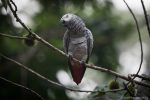
In the morning we sail up a tributary to Sangha for about fifteen kilometers, Mangui. We follow the northern border of the Ntokou-Pikounda park. This place is visited by an endemic species that was thought to be extinct, Bouvier’s red colobus, a small monkey with orange fur. Along the way we see birds. At the end of the day, our ship reaches the Ndoki River and again we observe hippos. Not far away, a pygmy village. Seminar on pygmy populations facing modernity.
Photo credit: @ Scott Ramsay
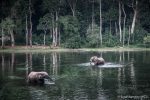
In Pokola we discover sustainable forest management. Then
we sail up the Sangha River, slalom between the sandbanks with care. The depth decreases. Arrival in Bomassa, a village that marks the entrance to Nouabalé-Ndoki Park. Nouabale Ndoki National Park (NNNP) is a protected area, listed as a UNESCO World Heritage Site, without human contact or exploitation, preserving untouched nature. It is located in the north of the Republic of Congo, in the Sangha department. Proud of its tropical forests and verdant clearings, it is arguably one of the best examples of ecosystem protection in the Congo Basin, and indeed in Africa. No roads or buildings have been erected by humans, and nothing but the animals has tamed this unique area of the world.
Photo credit: @ Scott Ramsay
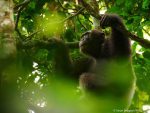
We delve into the Sangha trinational – a transboundary conservation complex. Located in the north-western Congo Basin, where Cameroon, the Central African Republic and Congo meet, the site comprises three contiguous national parks totaling approximately 750,000 ha. A large part of the site is unaffected by human activity and has a wide range of humid, tropical forest ecosystems with rich flora and fauna, including Nile crocodiles and goliath tigerfish – a large predator. Forest clearings support herbaceous species and Sangha is home to significant populations of forest elephants, critically endangered western lowland gorillas and endangered chimpanzees. As discreetly as possible, our group will be divided into two subgroups. Photo credit: @ expeditions Ducret
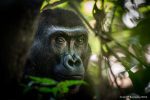
Three groups of 9-10 people will explore Nouabalé-Ndoki National Park. (Each group will do the excursions below but in a different order):
– Departure in the morning to reach Mondika’s scientific camp in the Djéké Triangle (1 hour by car, 2 hours on foot) to, in groups of 4, track groups of lowland gorillas followed by the scientists. Along the way we can see many other animals. Together with Baaka trackers, we follow the tracks of gorillas that have passed. When we find them, we observe them at a 10-meter distance while they observe us. The young chattering, the females feeding, others resting. The silverback is watching. The largest measures up to 1.70 meters. In order not to disturb them, we leave after an hour with fantastic images in our heads.
In the evening we stay overnight in the camp with the scientists and we will have plenty of questions. Night in safari tent with bed, shower and individual dry toilets.
Photo credit: @ expeditions Ducret
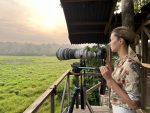
Departure at dawn for a 6-hour expedition to Mbeli Baï (40 min by car, 1 hour by dugout canoe, 40 min walk). This clearing is the meeting place for hundreds of animals, attracted by the mineral-rich water. From the top of a watchtower used by scientists, we discover the breathtaking spectacle of fauna: lowland gorillas, forest elephants, chimpanzees, bush pigs, sitatungas and forest buffaloes. We spend the morning here observing the animals. The most adventurous can arrive the day before to spend a night on the platform.
Photo credit: @ expeditions Ducret
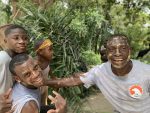
Departure in the afternoon. We leave Bomassa and we navigate back to Ouesso.
Photo credit: @ expeditions Ducret
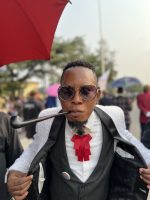
Disembarkation early in the morning for a 5 hour drive followed by a one hour flight. We return by 19-person private jet to Brazzaville. Through the cabin vents we can see all the primary forest. Such a view of one of the world’s largest forests will remain in our memory forever. Afternoon in Brazzaville. Visit the plateau market (traditional objects and handicrafts) and meet La SAPE which means in English – Society of Ambiance-Makers and elegant people. Packed lunch. Departure with Air France flight.
Photo credit: @ expeditions Ducret

With a robust steel construction, she is powered by two new generation 380 hp Caterpillar engines, reducing noise and fuel consumption. Its draft of 90 centimeters allows it to easily navigate shallow rivers. In 2023, she is under reconstruction to launch the first 4* safari cruises in the heart of one of the most mysterious forests in the world, the Congo Basin forest. Its renovation into a comfortable 4-star Boutique Hotel Ship launches a new era for the development of sustainable tourism in the Republic of Congo (Congo Brazzaville).
In May 2024, the first cruises begin on the Congo and Sangha rivers, thus reviving the long tradition of river navigation in Congo.
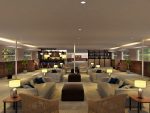
On board there are:
- Dining room
- Outdoor lounge
- Outdoor jacuzzi
- Massage room
- Observation deck
- Launch boats for land excursions
- Three additional aluminum launch boats equipped with low-emission four-stroke engines. Each boat has a capacity of 12 passengers.
- Kayaks for two people
The food is a culinary experience nourished by African and European influences. A menu specially created by a French chef who was rewarded for his work with a Michelin star in 2021. Local products and selected wines.
On board there are 21 staff, including a cruise director and 3 naturalists.

The observation deck from which you can enjoy the view and spot animals, plants and nature in the heart of Congo.

The boat offers 14 cabins in different categories and sizes as well.
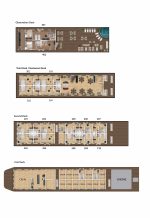
Trip details
Ecorating: 4.0
Season: Year round with fixed departures
Airport: Brazzaville international airport (BZW)
Included in the price: Accommodation in cabin on board,
- All excursions
- Expedition staff guidance and expertise
- Gorilla permits and park fees (Gorilla tracking is open to persons 15 years and older).
- Domestic flights with business jet registered in France or Kenya
- Everything on board the ship – accommodation with meals. Beer, wine and soft drinks are served with lunch and dinner in limited quantities.
- All hotel nights and meals are indicated in the day-by-day program
Not included: Airline tickets, visas, vaccinations, insurance, your consumption outside the boat: food, drink, tips, cabins, souvenirs, etc.
Republic of Congo:
Travel etiquette: French is the official language in Congo Brazzaville, but other local languages are also spoken: Kikongo (36.5%), Lingala (13%), Mboshi (8.5%), Teke (8%) and over 40 other languages. In general, people understand and speak French, but if you leave the big cities, dialects may be the majority. On board, the guides speak French and English.
With a human capital index of 0.42, the country has made little progress in the areas of
health and education. Maternal and infant mortality rates remain high – 5% of children will not reach the age of five and 21% are chronically undernourished. In addition, only 30% of children in primary school have reached the required proficiency levels in mathematics and 40% in French. Although strong economic growth in Congo reduced poverty levels between 2005 and 2015, the 10.3% decline in real GDP in 2020 pushed the poverty rate up from 48.5% to 52.5%.
Packing: Lightweight, breathable clothing, long-sleeved shirts and quick-drying pants (preferably in
natural colors), lightweight, quick-drying closed-toe walking shoes or old sneakers, a lightweight fleece or sweater for cooler evenings, lightweight raincoat, A sun hat, swimsuit, casual clothes and
comfortable shoes for relaxing on board. Binoculars (preferably with night vision), flashlight (headlamp
recommended), Camera with at least 200 mm lens, water bottle, lightweight backpack for daily excursions.
Luggage must not exceed 20 kg due to weight restrictions on domestic flights.
Mobile & Internet: Telephone and internet coverage is very limited. You will
not be able to connect during some parts of the cruise. The ship is equipped with a satellite phone and Wi-Fi if necessary. Use of this service is at the passenger’s expense.
The price will be announced and payment is made on board.
Electricity: Outlets are of the European type (C, F and M) with 220 volts. Adapters can be purchased at airports, in duty-free shops just before boarding.
Time zone: GMT + 2
Vaccinations & Health: Passengers must be in good physical health to do
most of this cruise. Daily excursions involve hiking in uneven terrain, boarding and disembarking from boats can be physically demanding. Excursions on foot can sometimes take several hours (especially for the gorilla safari). An alternative route may be offered in some cases.
List of mandatory vaccinations:
– A yellow fever certificate is required for entry into the Republic of Congo.
– Polio, measles and covid-19 vaccinations are mandatory for gorilla monitoring in Nouabale-Ndoki NP. Covid- 19 rapid test will be carried out in Nouabale-Ndoki NP. Only a negative result will allow you to track the gorillas.
– Malaria. There are two complementary ways to prevent malaria:
• Protection against mosquito bites: wear light-colored, loose-fitting, covering clothing impregnated with an insecticide textile treatment at dusk; use an insect repellent (Repellents containing DEET are recommended in the Congo Basin).
• Preventive treatment against malaria, anti-malarial medicine.
Read more about which vaccinations you need. Contact your vaccination center for more information.
Local currency: The local currency in Congo is the CFA franc. (655 FCFA =
1 euro). The exchange rate is fixed. You can exchange currency in Brazzaville or use your credit card at ATMs. Most transactions are made in cash.
Weather & Climate: The climate in Congo is of equatorial type with temperatures varying from 21 to 30 degrees between night and day. Depending on the season, rainfall is more or less abundant
in the Sangha region:
• September, October and November are the least rainy
• July and December, January, February are the driest
Water: Access to drinking water is still a major problem in Congo Brazzaville. It is advisable to drink bottled water. Water fountains are available on board.
Security: The majority of the trip takes place in sparsely populated areas. In addition, the Republic of Congo is one of the safest countries in Africa.
For more information and advice read: Travel tips Congo
Entry requirements: The visa must be obtained before departure from the consular services of the Republic of Congo in your home country. For European citizens: Your passport must be valid for 6 months after your return home.
A yellow fever certificate is required for entry into the Republic of Congo. If you want to visit the Dzanga Sangha National Park in the Central African Republic or the Lobéké Park in Cameroon, you do not need an extra visa. You will receive a special permit.

Ecorating: 3.5
This product meets our requirements for Ecorating, a product that is good for humans and the environment.
Does my trip make a difference?
Read more
This product meets our requirements for Ecorating, a product that is good for humans and the environment.
Ducret Expeditions’ commitment to conservation:
Respect for environments. Zero waste. Environmentally friendly ship. Working with local communities for a positive impact on people. Small groups for low impact and to disturb the environment as little as possible.
Responsible travel:
Traveling in a small group by disturbing the ecosystems as little as possible, by only leaving a minimal trace of our passage, by preserving the right balance, this is our vision of travel. We travel to become aware of and admire the beauty of the world, to enrich ourselves, not to harm it. Our commitment to Congo is long-term and our development goes hand in hand with the preservation of fauna, flora and indigenous cultures.
Commitment to local communities:
We support the local economy by employing staff from various communities, paying taxes and fees. We contribute to social projects which in turn enrich the customer experience. Exploring the daily life and customs of local communities is an integral part of our expeditions.
Commitment to biodiversity and preservation of indigenous cultures:
The development of tourism is one of the key factors for environmental protection. The jobs created make it possible to offer new sources of income that replace the trade in bush meat, the main scourge for the survival of species.
To preserve the memory of indigenous peoples, we are also working on a sound collection project of legends and oral traditions from the peoples of the Sangha region.

